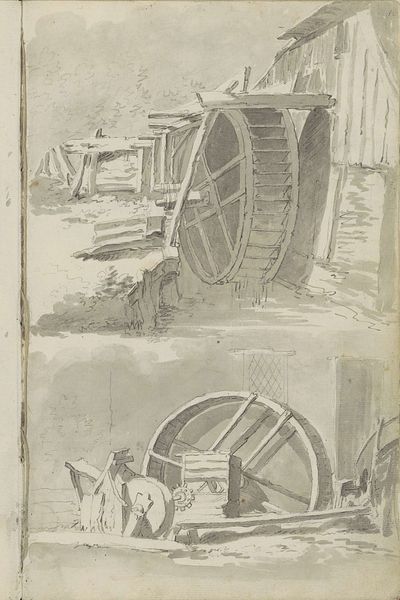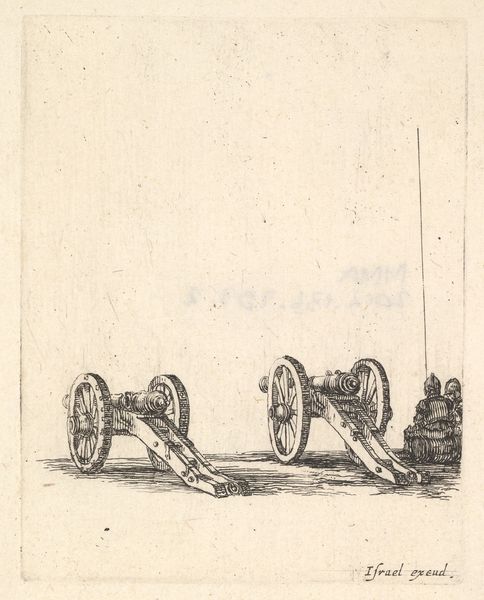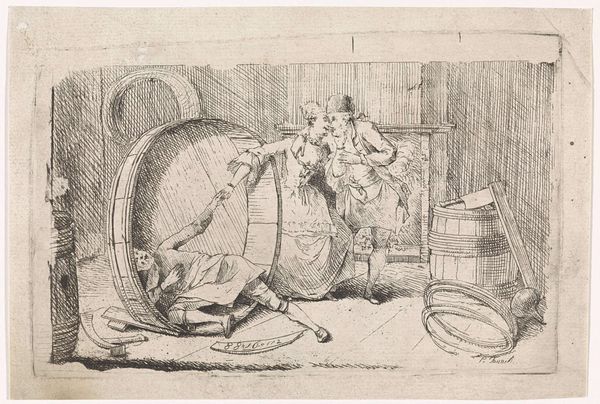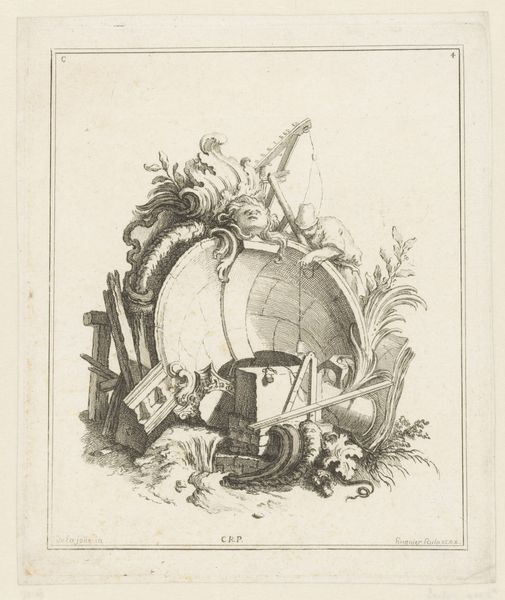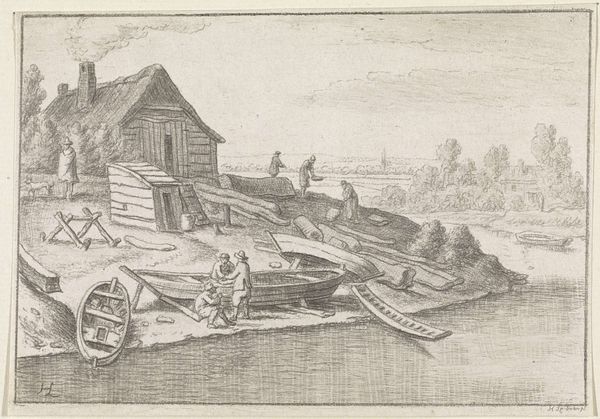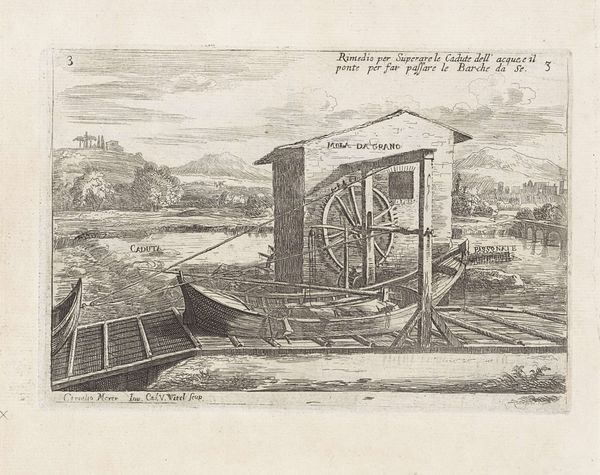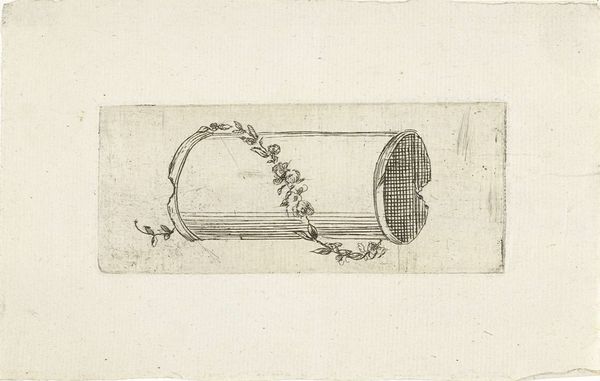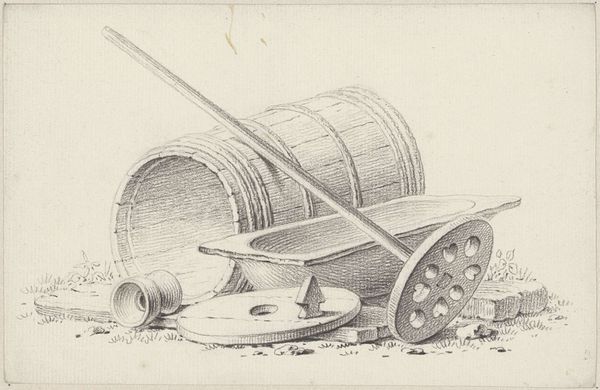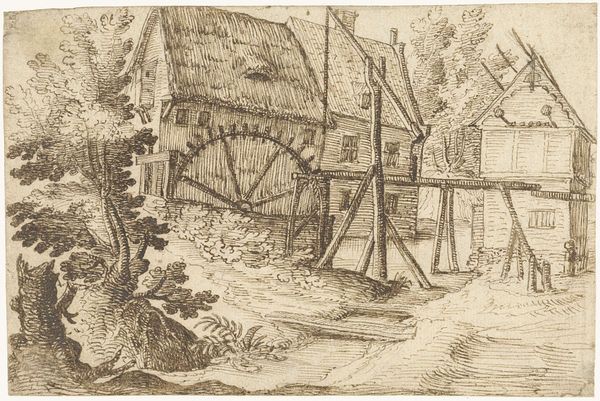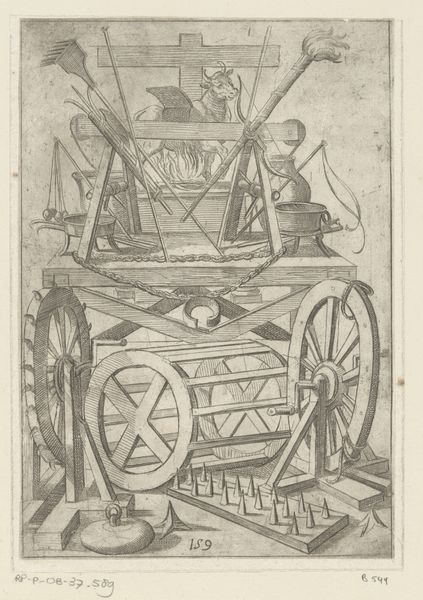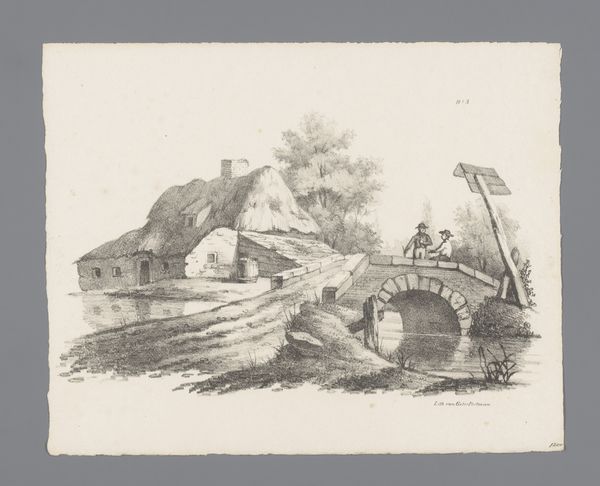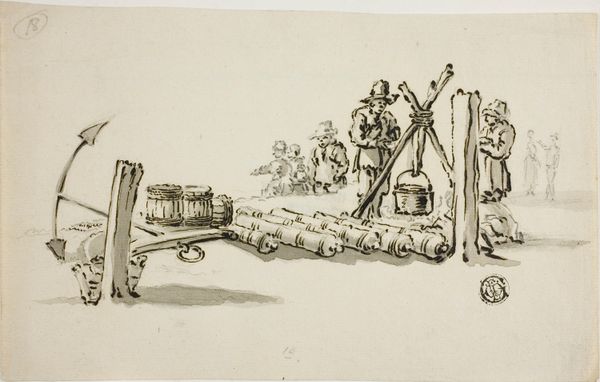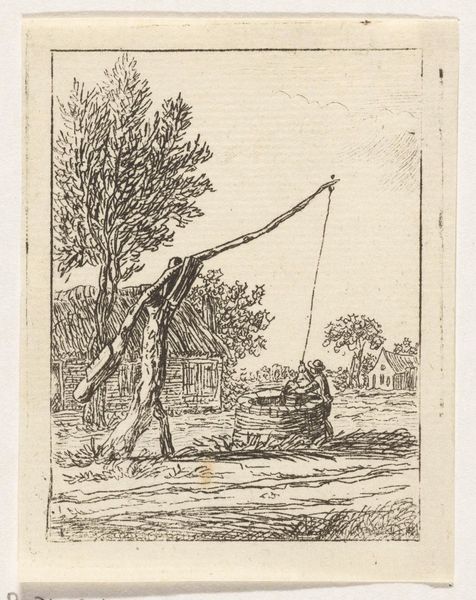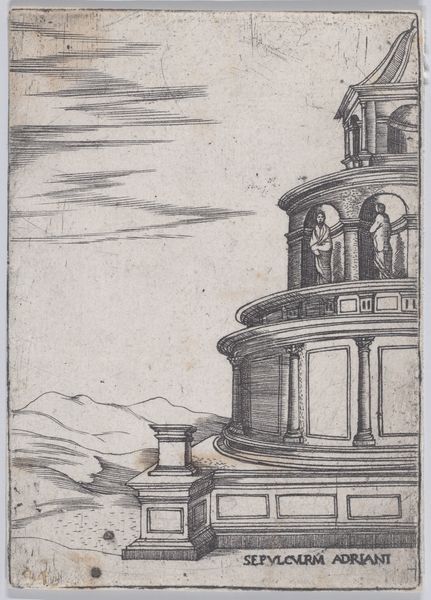
A mortar without a carriage lying on the ground to the right, soldiers firing cannons creating clouds of smoke in the background, from 'Equipment needed for Fortification' (Recueil de diverses pièces très nécessaires à la fortification) 1638 - 1643
0:00
0:00
drawing, print, engraving
#
drawing
#
baroque
# print
#
cityscape
#
history-painting
#
engraving
Dimensions: Sheet: 4 3/8 x 3 9/16 in. (11.1 x 9.1 cm) Plate: 3 5/16 x 2 5/8 in. (8.4 x 6.6 cm)
Copyright: Public Domain
Curator: Today, we're looking at an engraving by Stefano della Bella, created between 1638 and 1643. The title is "A mortar without a carriage lying on the ground to the right, soldiers firing cannons creating clouds of smoke in the background, from 'Equipment needed for Fortification.'" Editor: My immediate reaction is a sense of overwhelming power, juxtaposed with vulnerability. The mortar dominates the foreground, yet it's disabled, while chaos erupts behind it. Curator: Absolutely. Bella was meticulous in depicting military equipment, even in its decommissioned state. Look at the layering of lines to create texture on the mortar. Consider the role of printed images such as this one during this era. Prints such as these served as reference material for military engineers, but could also be reproduced cheaply and thus disseminated quickly and widely. Editor: And that detail on the cannon is quite intricate. I see something like a crest, adding an almost heraldic significance to what is, ultimately, an instrument of destruction. Curator: Precisely. These details underscore the social function and status that the ruling class were seeking at the time. Notice the sheer amount of materials and skill necessary for these engines of war. Editor: It speaks volumes. The cannons in the background almost disappear into clouds of smoke, obscured behind the fallen mortar. But the smoke itself takes on this dramatic, almost allegorical quality. Is he saying something about the glory, or lack thereof, in warfare? Curator: One might be tempted to. I read it as more functional and practical, an intention to catalog what is actually necessary on the battlefield in times of war. This, of course, could also be the case with the "decommissioned" mortar which could in fact suggest other interpretations. Editor: It’s interesting how the city behind is both a specific location, implied in the image through the towers, and a universal symbol of civilization under threat, all built by human labor and materials Curator: Della Bella provides us a wealth of details about that civilization, from methods of fortifications to the materials utilized for war and their impacts. It also encourages us to consider how things have changed and remained the same. Editor: A compelling mix of destruction and observation; it leaves you pondering the weight of symbols and tools, how we imbue objects with meaning. Curator: Indeed. From the battlefield to the very process of art making. Thank you for lending us your insights!
Comments
No comments
Be the first to comment and join the conversation on the ultimate creative platform.
